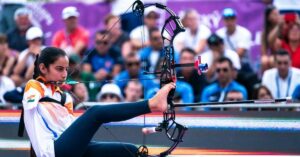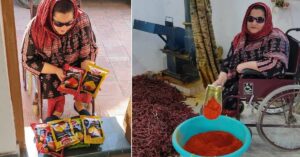‘Vision Nanny’ by 3 Friends Uses Tech To Make Therapy Affordable for Kids With Visual Impairment
Prathyusha Potharaju, Vivian Manohar, and Nivedha Christabel started Grailmaker Innovations, an assistive technology company in Hyderabad. Their initial product ‘Vision Nanny’ offers cost-effective therapy for children with cerebral visual impairment (CVI).
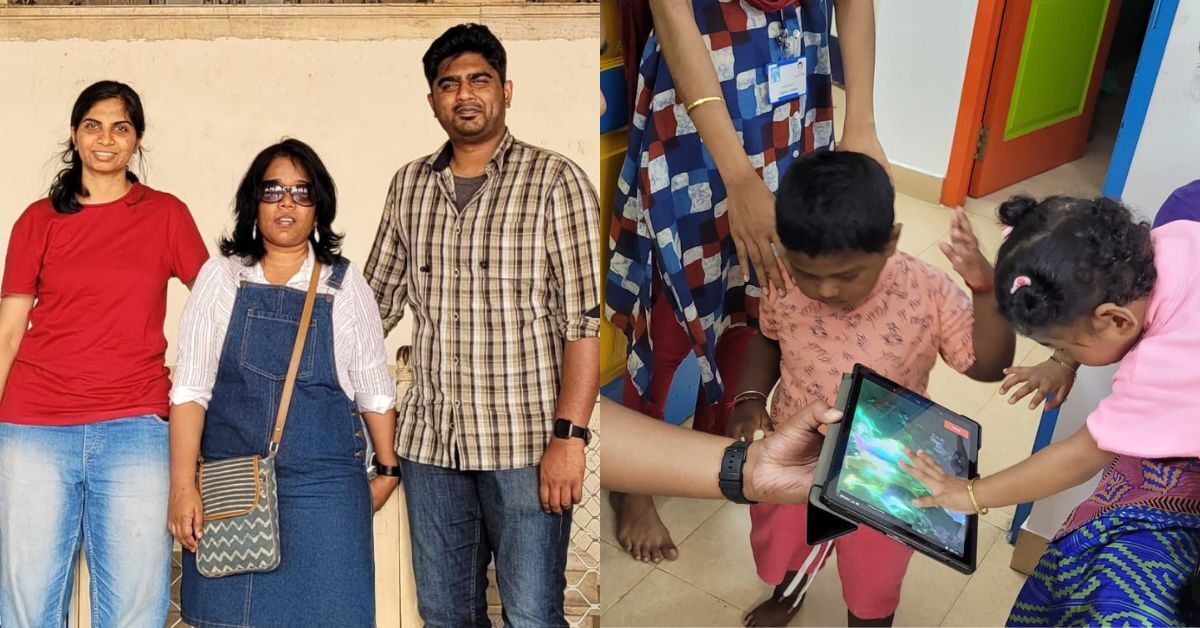
Prathyusha Potharaju had a really hard time writing the alphabet as a child. She recalls that she would often end up writing mirror images of the letters and struggled to form words. The school she was enrolled in didn’t recognise that children have different developmental milestones and grow differently. Instead of focusing on helping this child, who was hardly four, they made life miserable for her.
“My mother saw me crying after school many times and realised that something was not right. When I was five, she put me in another school that followed Montessori principles, and that changed my life,” says Prathyusha to The Better India.
The principal of this new school, which has since shut down, was unlike the other educators the young girl had met — he took a personal interest and helped diagnose her with mild dyslexia.
“The principal then held sessions regularly to help me out using Montessori methods, which focus on self-learning and use play to help children learn. The school was play-oriented and didn’t focus just on studies. Slowly, I started writing and learning well,” adds the 26-year-old.
A six-month journey to find their purpose
This was Prathyusha’s introduction to how important timely intervention is when it comes to learning disabilities. It’s also what she understood with much more detail after she began volunteering years later at L V Prasad Eye Institute in 2020.
Volunteering at the organisation’s Institute for Visual Rehabilitation, she would record audiobooks for children living with visual impairments, and witnessed the “positive effects of early intervention in many young children”.
It was also here that she found like-minded people in Vivian Manohar (32), a mechanical engineer, and Nivedha Christabel, an optometrist.

Vivian recalls, “We were able to see first-hand the problems faced by the community. While there are a lot of technologies available to help people with visual impairment, most are imported or not accessible. We wanted to change this, and make technology accessible and affordable,” adds Vivian.
The same year, Vivian and Prathyusha were chosen for a government fellowship for social innovators called SPARSH, conducted by the Biotechnology Industry Research Assistance Council (BIRAC).
As part of this social innovation programme, they travelled to rural areas across the country like Jharkhand and Chhattisgarh for six months and gained exposure at three levels — primary, secondary and tertiary healthcare.
Prathyusha recalls, “We had a chance to travel around the country and observe the medical setup. As we were keen on helping children with disabilities, we focused on how they were accessing healthcare.”
“At L V Prasad, we had a glimpse of how early intervention works. However, in rural facilities, even in government hospitals, not many facilities were available for developmental disabilities. This was true for most small towns and villages. We knew that this was the area we needed to focus on.”
And so in 2021, Prathyusha, Vivian and Nivedha co-founded Grailmaker Innovations, an assistive technology company. With the monthly stipend and kickstart grant they received from their fellowship, they developed their first product — Vision Nanny.
Affordable treatment for thousands of children
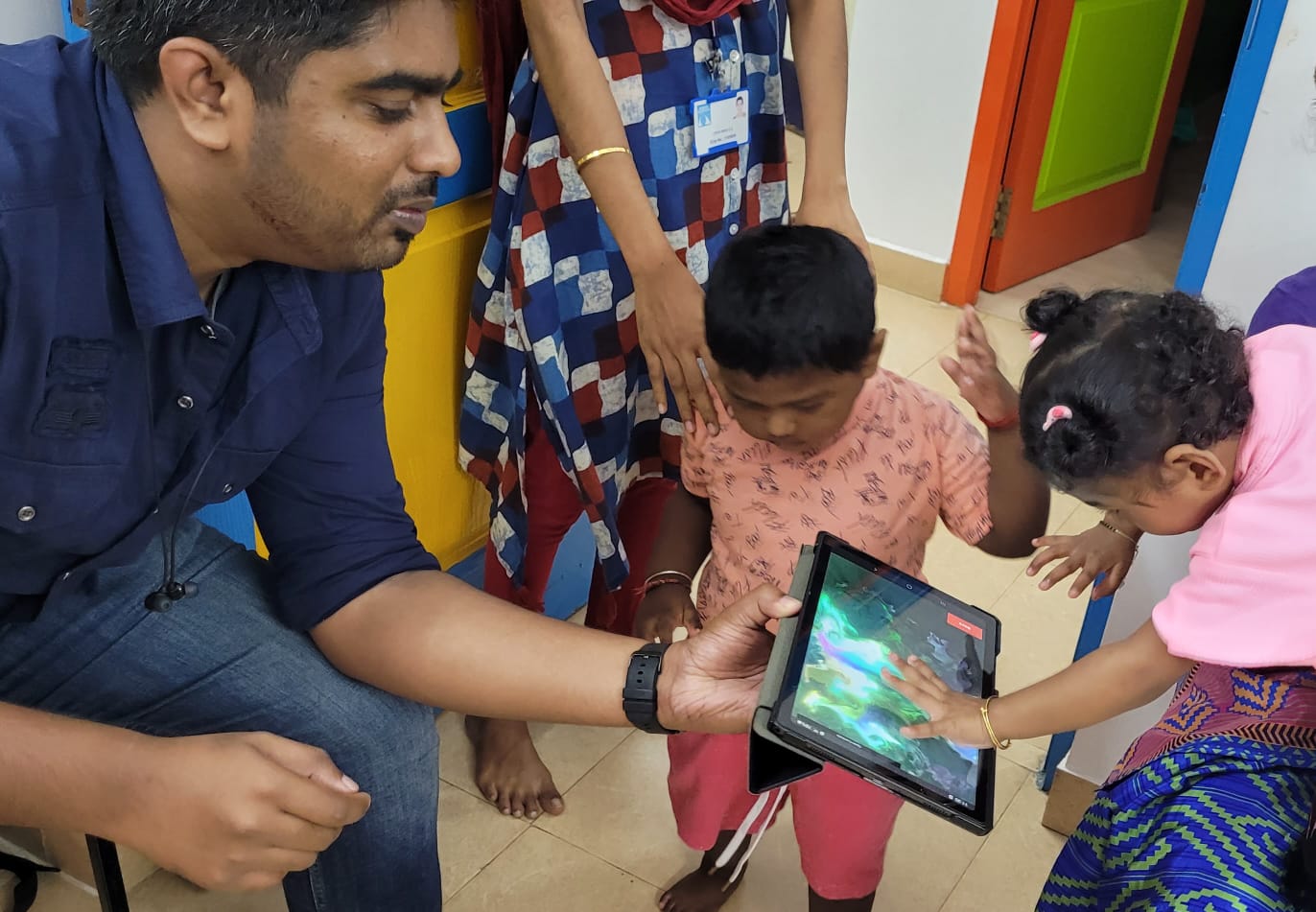
Vision Nanny is a SaaS platform (software application) that provides therapy for cerebral visual impairment (CVI) at the click of a button. Why CVI?
During their fellowship, the duo observed that several young children had visual impairments that were not ocular (eye-related) but caused by damage to parts of the brain that process vision.
As Vivian explains, “CVI is a major problem that is going unaddressed. It is a growing cause of childhood blindness. This occurs in children because of complicated birth, preterm birth, or accidents. Their eyes are fine, but due to neurological damage, they are not able to understand what they see. The whole world looks like a confused maze for them. The only solution for this is vision therapy, but the awareness and expertise at rural centres is appalling,” adds Vivian.
Vision Nanny caters to children with this problem. It is a set of digital activities that can be accessed through a mobile device, tablet, laptop, or even Smart TV. Every activity that is provided for developing the visual skills of a child in a hospital is available on this platform and has the advantage of being customisable.
“Vision Nanny provides personalised intervention for every child with CVI through customisable, interactive, vision stimulation activities. It is designed for parents and special educators. You can access different colours and pictures, move objects, show charts, conduct simple activities like moving a torchlight, etc,” says Vivian.
The platform has three phases, depending on the age and condition of the child. The different activities are used to improve the user’s vision, and the platform is also equipped with interactive tools that make this process fun.
“It starts with simple shapes like circles and triangles, which you can show in different colours. You can also change the background colour and size of the object, highlight features, add text, and bubble wrap it. This helps children identify the word as a shape. You can also move objects and add complexity as the child grows,” notes Vivian, adding that these interventions change how children interact with the environment and do activities independently.
“After recognising different objects on the screen, they will be able to view things better in person too, starting with simple things like recognising their toothbrush and toothpaste,” he explains.
Vision Nanny also aims to help therapists with an easy-to-use assessment tool and dashboard to monitor the overall progress of the child.
Dr Beula Christy, head, Institute for Vision Rehabilitation, L V Prasad Eye Institute, says that this platform is a big boon. “This application gives educators and parents the ability to control everything with customisation, which other apps don’t offer. You can change colour, change activities, and even show your photo. It helps continuous therapy, which is the need in CVI,” says Dr Beula.
A better life for children with CVI
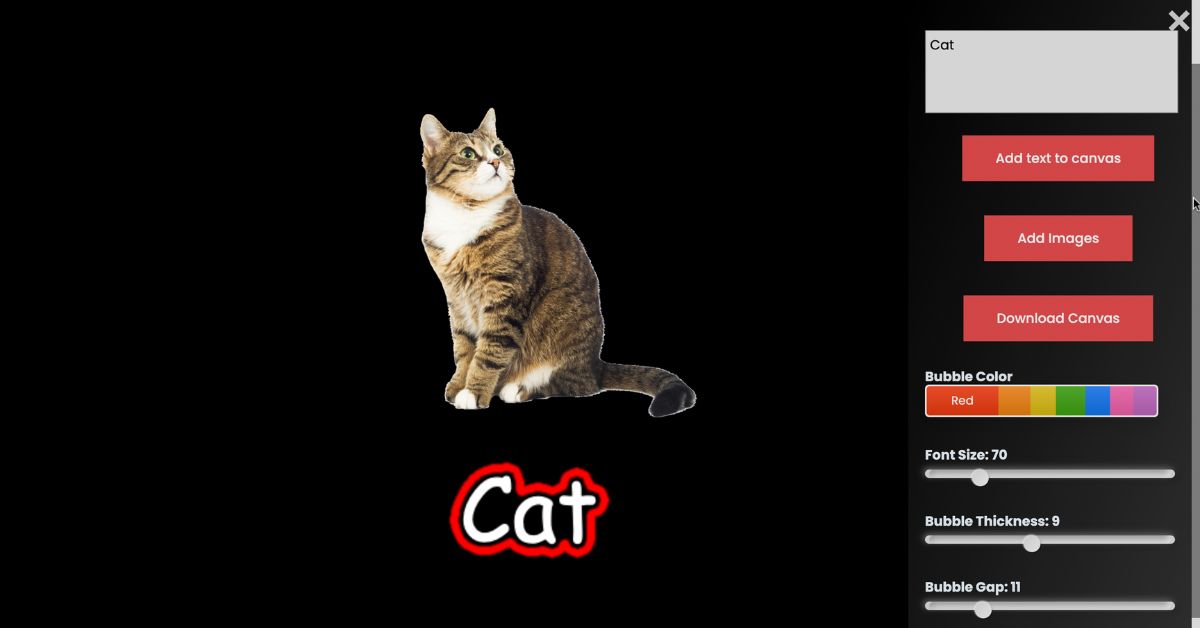
CVI cannot be treated with surgery or spectacles like other ocular problems. Since this is a problem related to the brain, treatment has to be continuous, and the best results are seen in children where intervention is done early.
“Early assessment and intervention is crucial. We have babies as young as eight months who come to our centre with CVI. We do vision therapy with them. This has to be continuous. After doing it for, say, three months, we teach the parents to do the same at home. If therapy is interrupted, even for a month, we have to start from scratch again,” adds Dr Beula.
Rohini (name changed), mother of a 4.5-year-old girl with CVI, believes that long-term therapy is not practical for most people due to its financial and mental strain. Her daughter was diagnosed with CVI after an accident when she was just one year old.
“We went for therapy to hospitals for almost two years. We would leave home at 7 am in the morning and return only by early evening. My daughter is a schoolgoer now, which makes it difficult to attend therapy regularly. It’s also very expensive. When the pandemic hit, we would go to the hospital by bus to save money,” says Rohini.
CVI is a growing problem in India, with Grailmaker estimating that around four million children in India are affected by it. One therapy session for CVI costs Rs 800–1500 for an hour, which amounts to almost Rs 2 lakh per year.
With Vision Nanny, though, the cost is Rs 7,000 per year, which is much more affordable. Rohini adds that Vision Nanny is a great tool that allows them to continue therapy from home.
“We have seen a marked improvement in our daughter thanks to therapy. Vision Nanny has many activities which engage the child and help improve their hand-eye coordination. After school, I spend time with my daughter using the application,” adds Rohini.
With daily practice, Rohini is confident that her daughter can lead an independent life.
Vivian says, “We want this intervention to reach any child, even at the remotest of areas, and help health workers easily screen and provide therapy.”
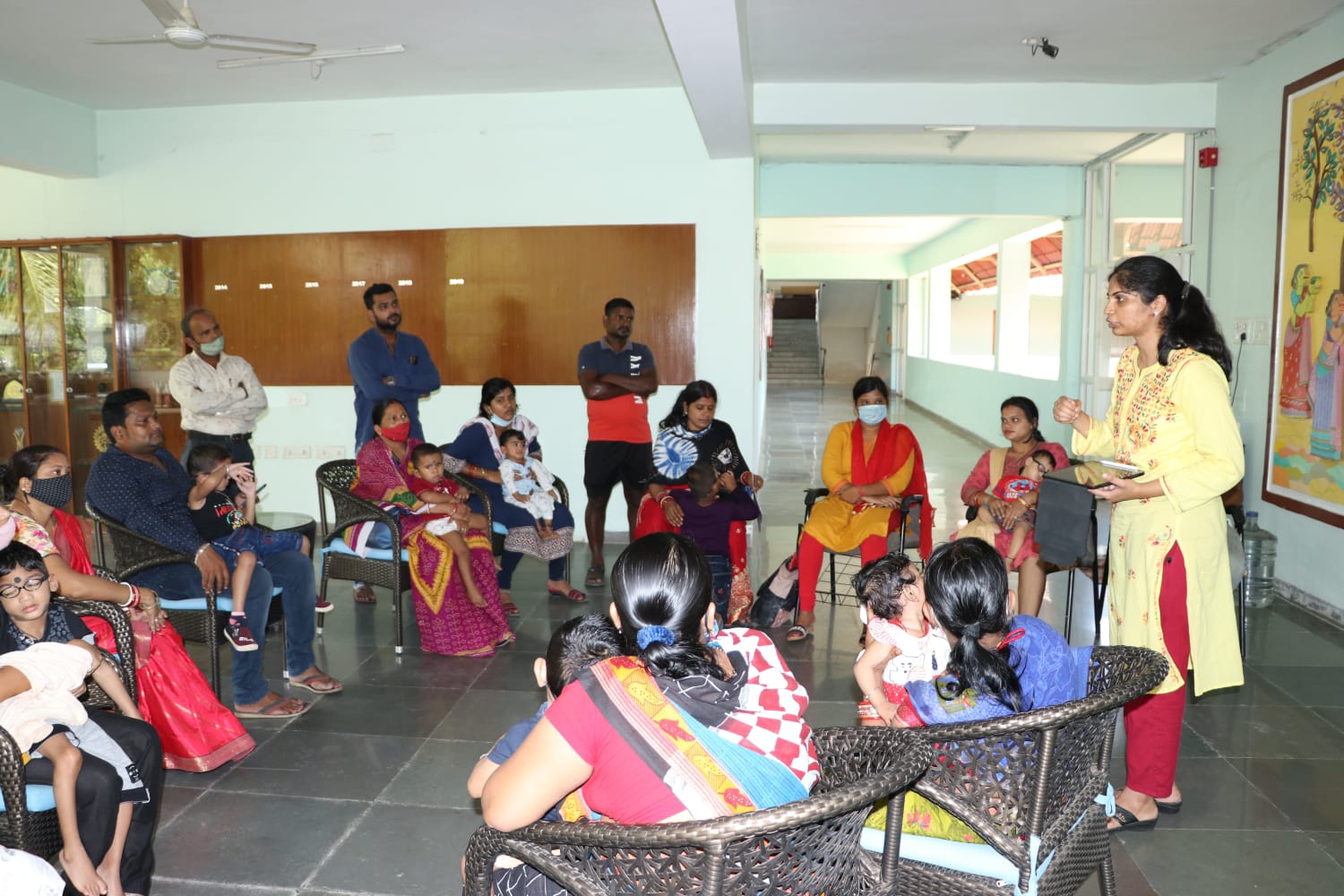
Launching Vision Nanny as a pilot programme in June 2021, the duo has so far seen 1,800 subscribers, including special educators from 10 countries like Dubai and USA. Annual subscription costs Rs 7,000 per annum.
“If intervention is not done at the right time, it affects their other abilities. Many times, they are also mislabeled as children with learning impairment. We don’t want any child to lose out on having the right treatment,” says Prathyusha.
This treatment is helping children, including Rohini’s, attend school and access education like their peers. “My dream is for my child to have a good life. Thanks to therapy, she can go to potty herself, go to school, and play with children. Vision Nanny has given us hope for a better future,” Rohini adds. If you found our stories insightful, informative, or even just enjoyable, we invite you to consider making a voluntary payment to support the work we do at The Better India. Your contribution helps us continue producing quality content that educates, inspires, and drives positive change. Choose one of the payment options below for your contribution- By paying for the stories you value, you directly contribute to sustaining our efforts focused on making a difference in the world. Together, let’s ensure that impactful stories continue to be told and shared, enriching lives and communities alike. Thank you for your support. Here are some frequently asked questions you might find helpful to know why you are contributing?

You can learn more about Vision Nanny here.
Edited by Pranita Bhat
This story made me
- 97
- 121
- 89
- 167




